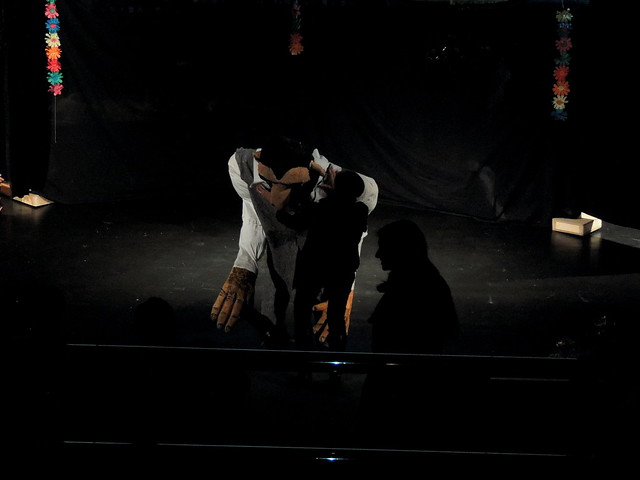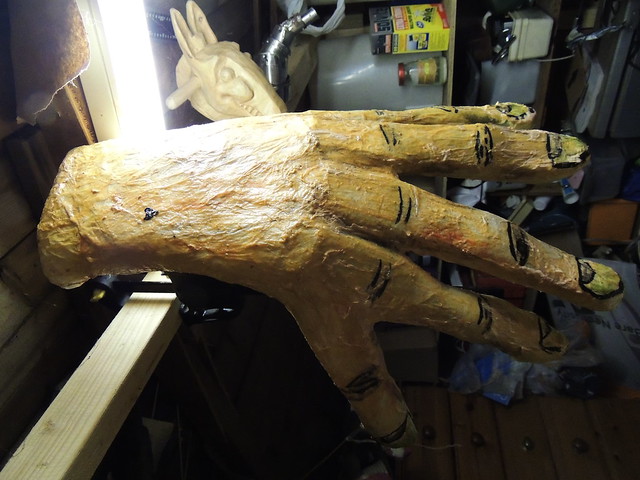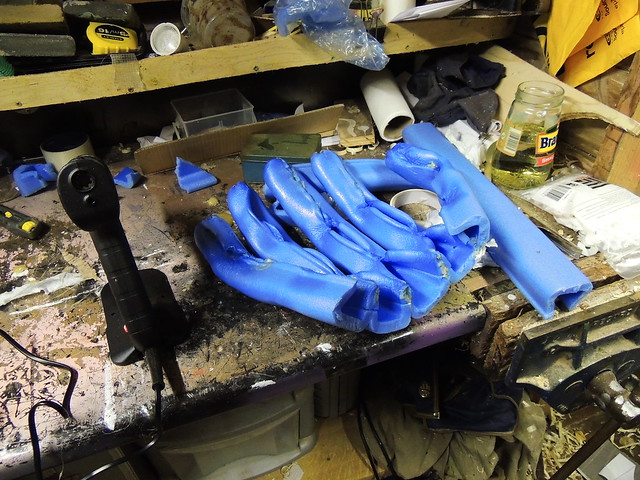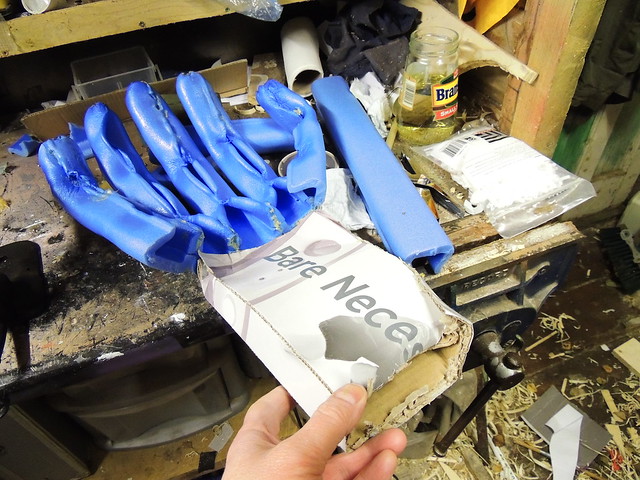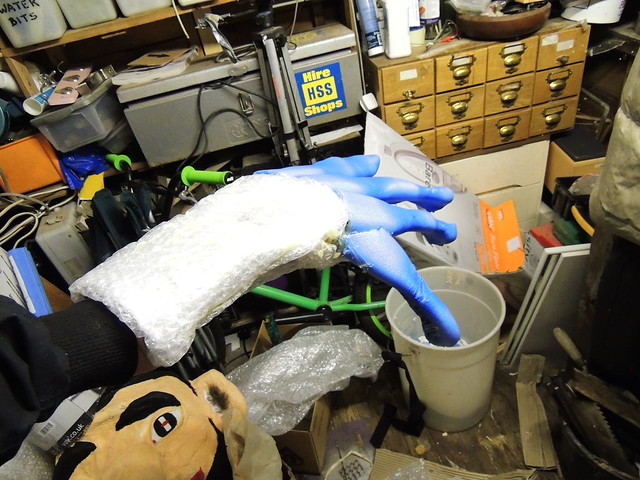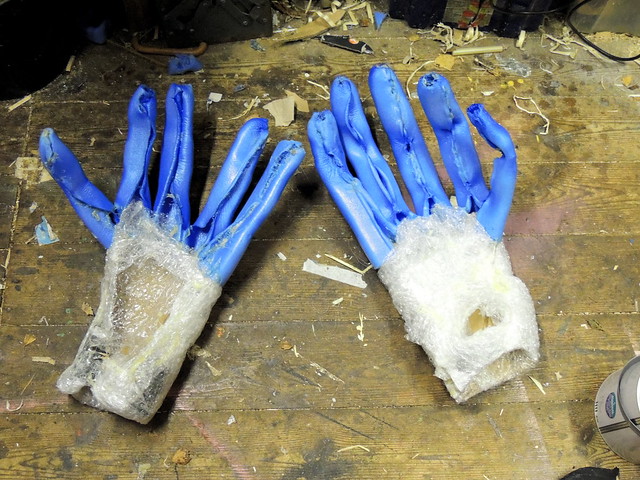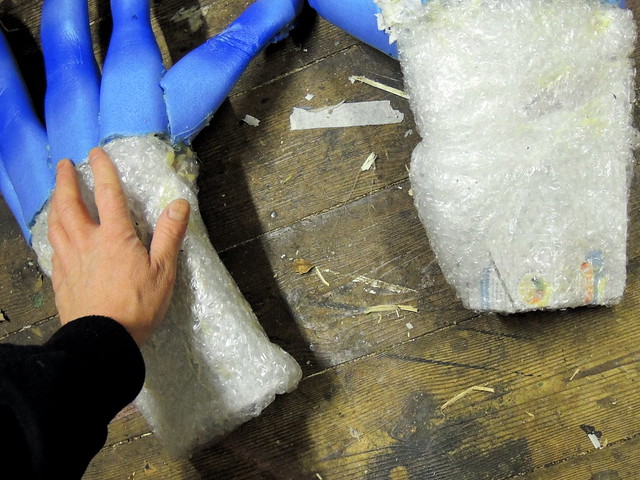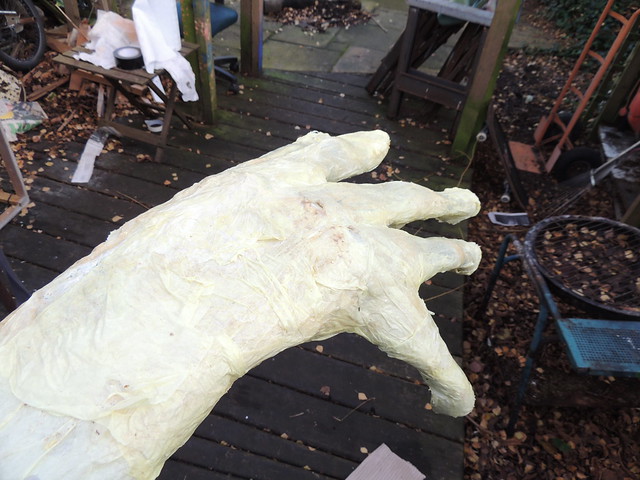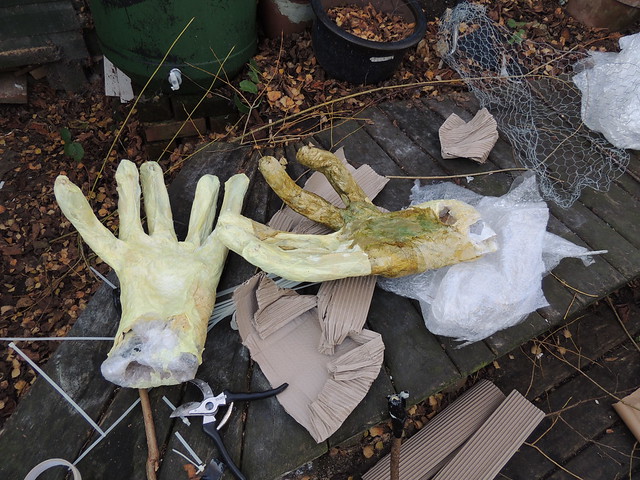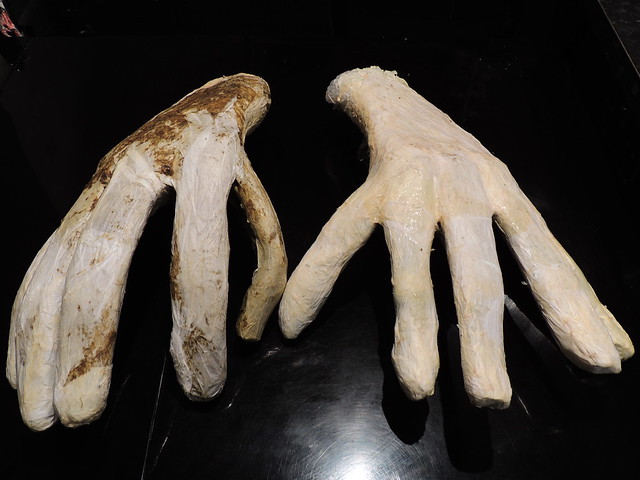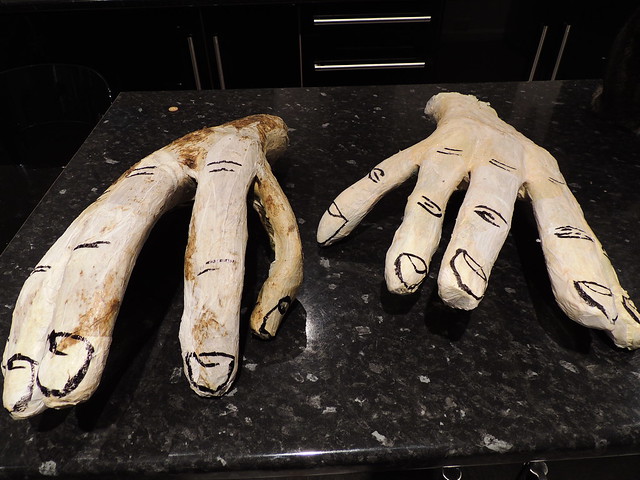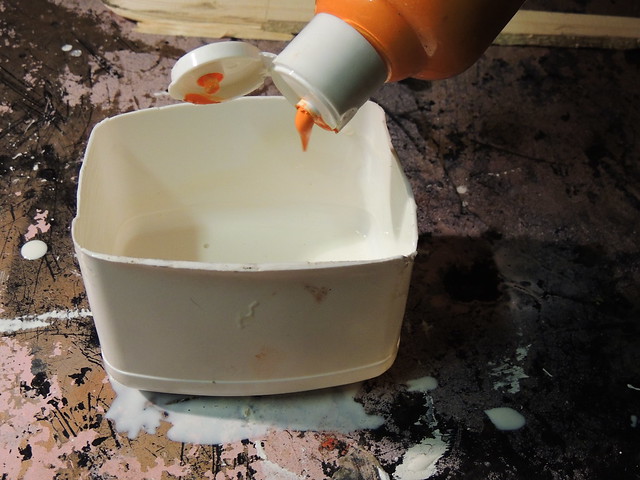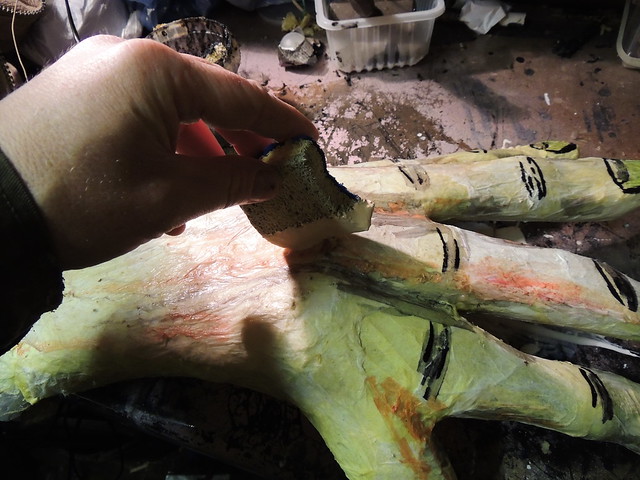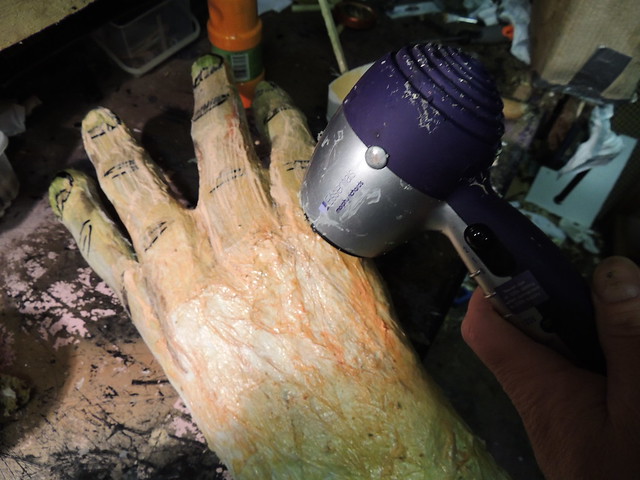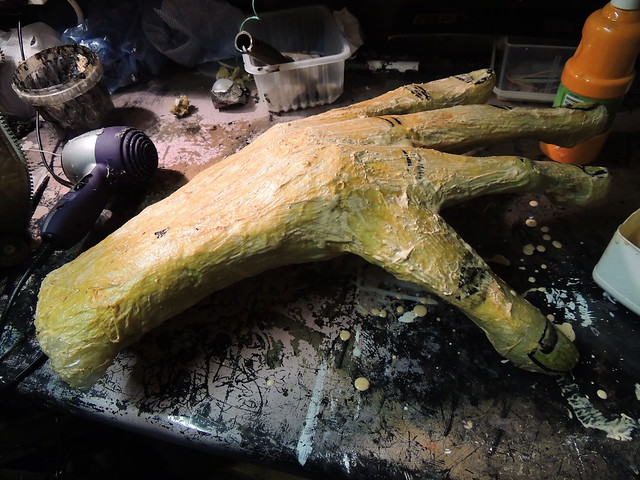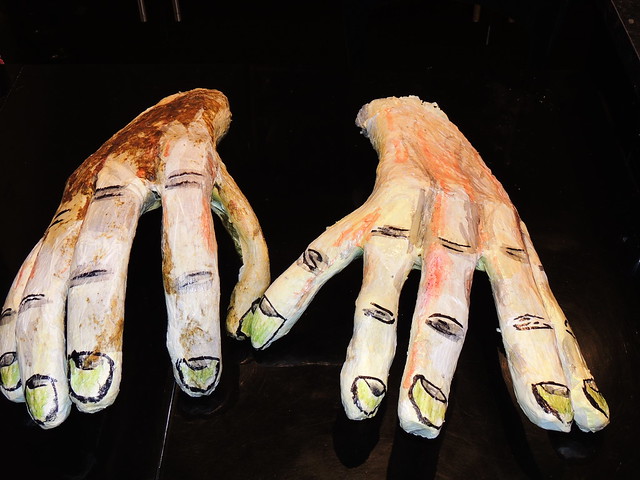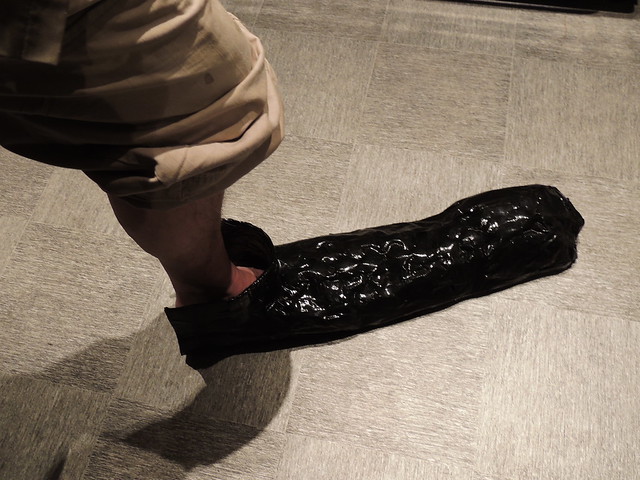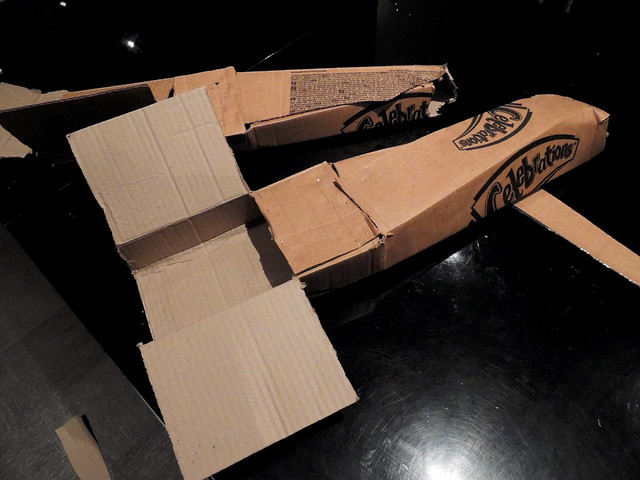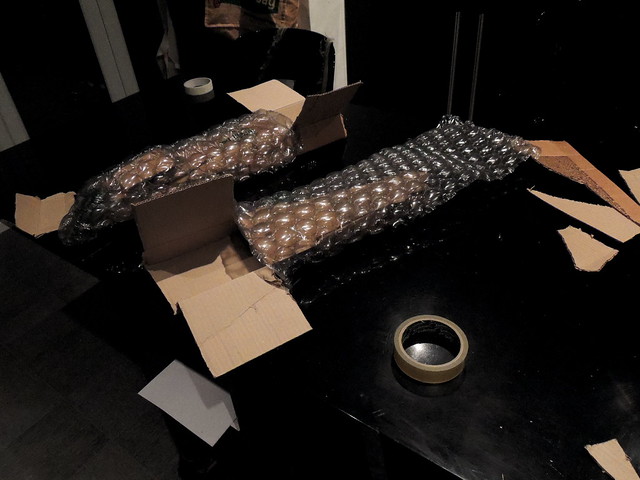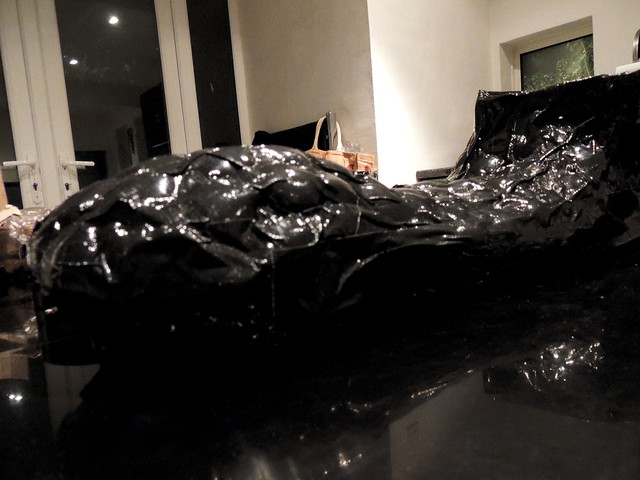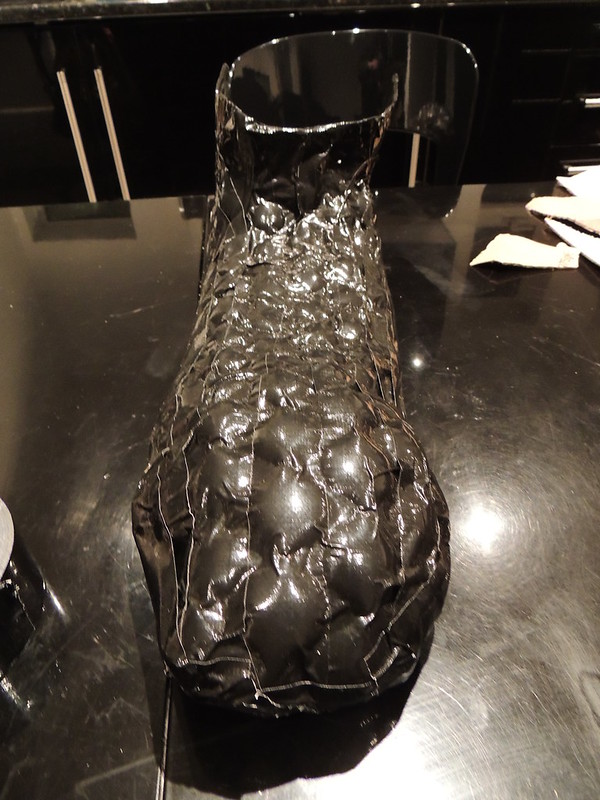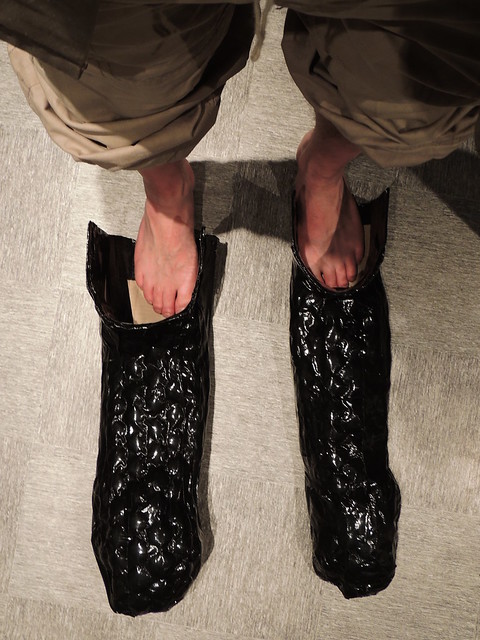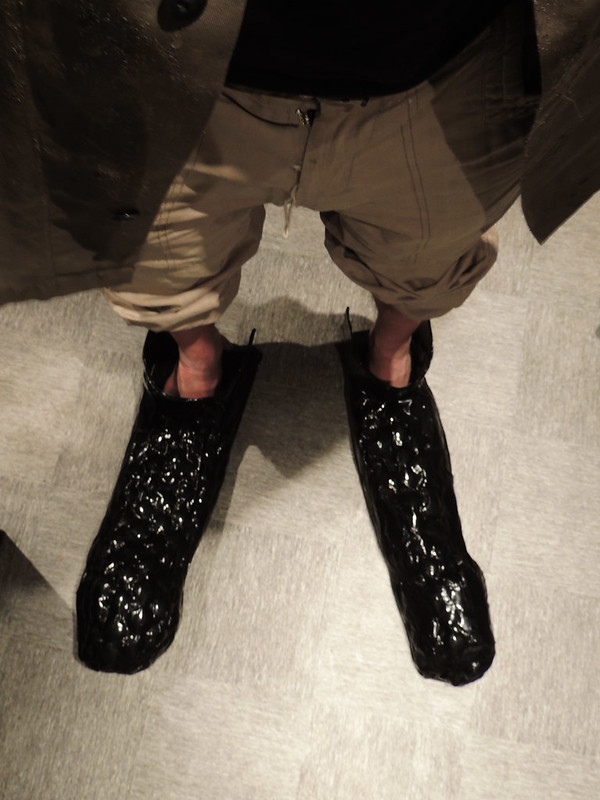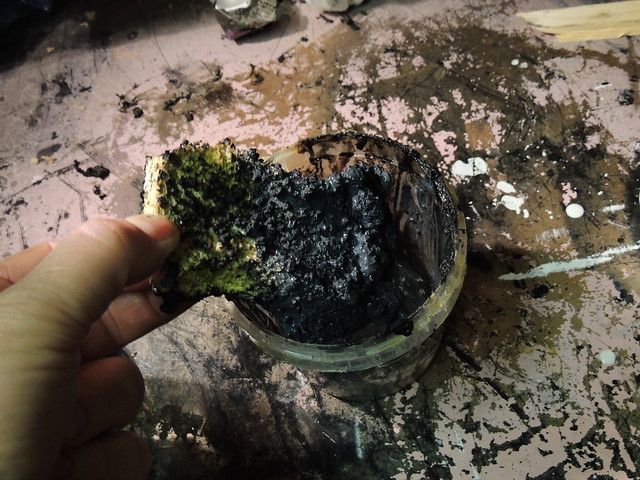It was built by adapting an existing papier mache scarecrow head, adding a lightweight support-brace to mount the head onto an actor's head and upper body. With 18" hands added, it gives a fairly big physical presence despite weighing very little.
When worn, the giant stands about 7' 6". The height is dependent on the height of the wearer. The costume adds about 20" (50cm) to the height of the operator and about 24" (60 cm) to the length of the arms, and this was a 5' 10" actor.

Inside the costume is a head mount and shoulder braces (thin black loops)
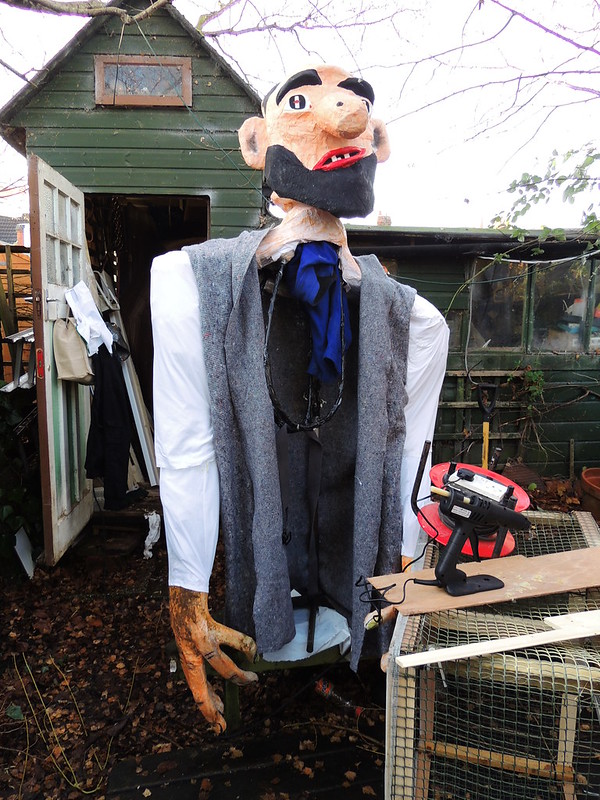
Looking up into the costume. The head sits on a skull cap, with front and back bracing to take the weight off the actor's neck.
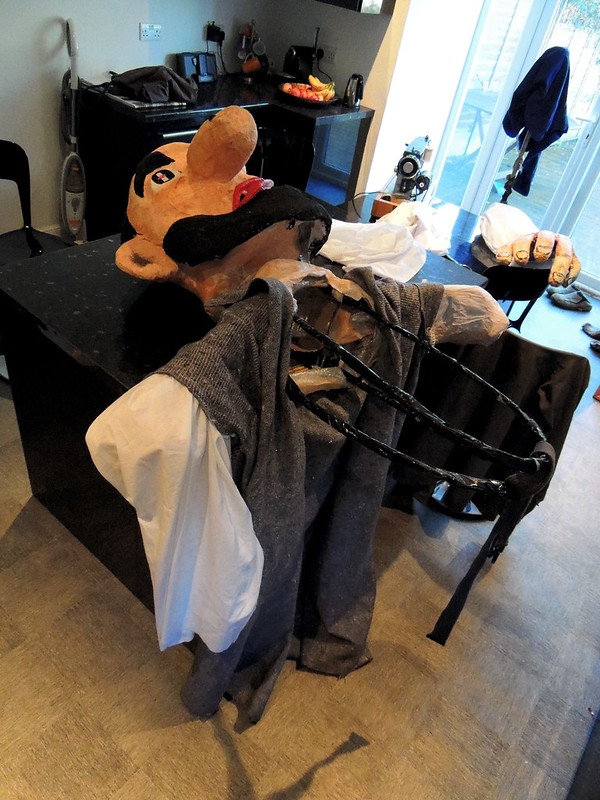
The head itself was made previously by someone else. To make it wearable a mount was added, then a lightweight set of shoulders built up (mainly thin card over a willow stick frame with bubble wrap skinning.
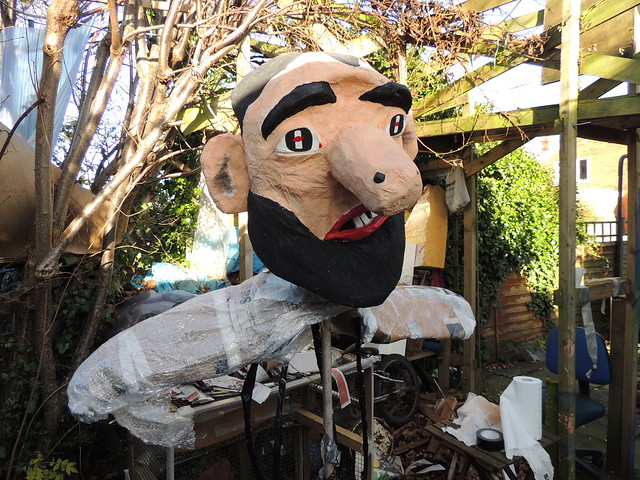
A close-up of the shoulder base.
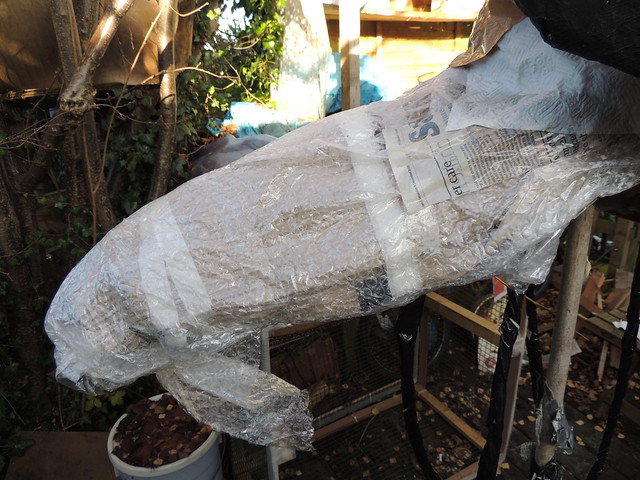
The shoulders were covered in papier mache, which was blended into the exisitng head to form on solid head and shoulder unit.
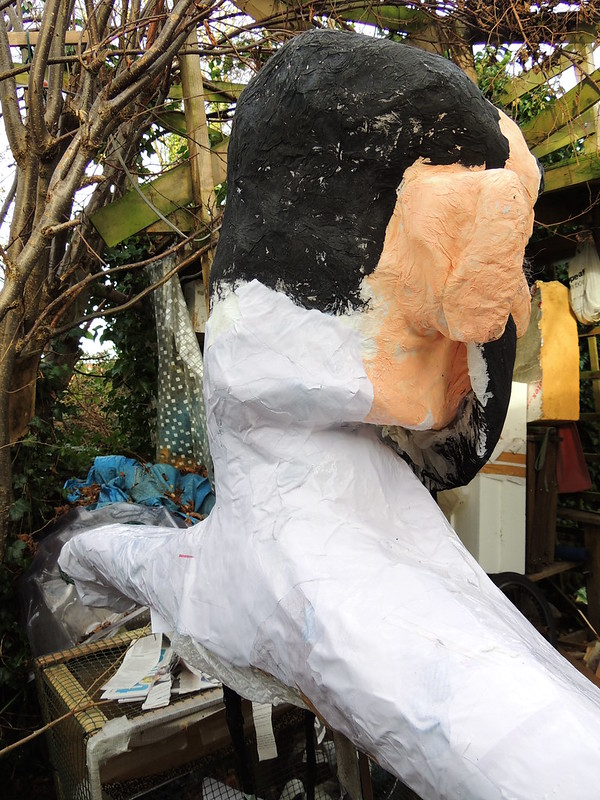
From the front...
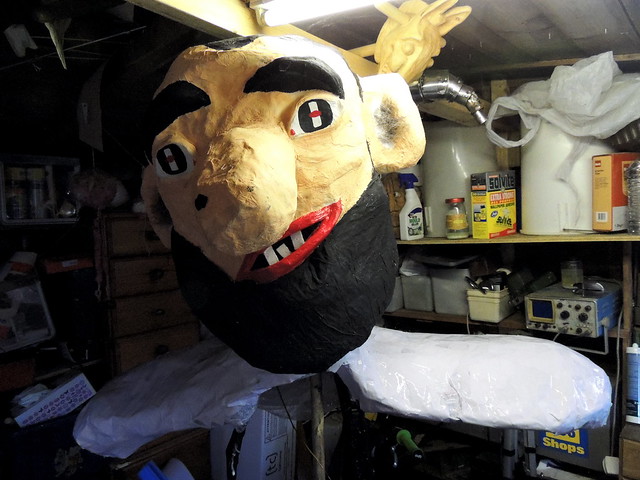
Neck/head joint shown here after final tinted latex coat has been added for durability.
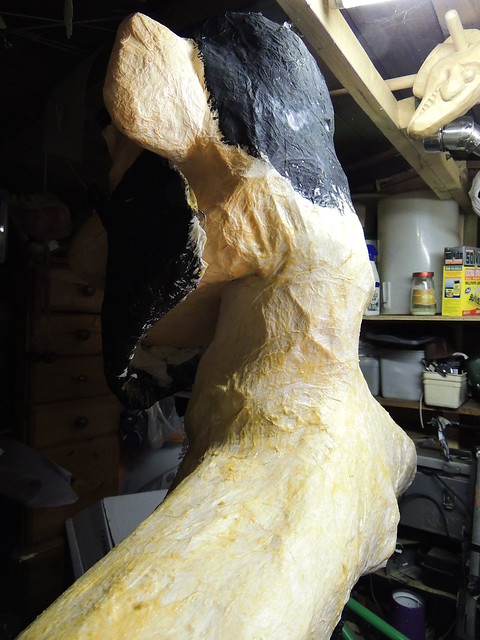
Next some hands were needed...
Note there is a whole post about how these were made:
http://makingweirdstuff.blogspot.co.uk/2012/12/making-lightweight-hands-for-giant.html
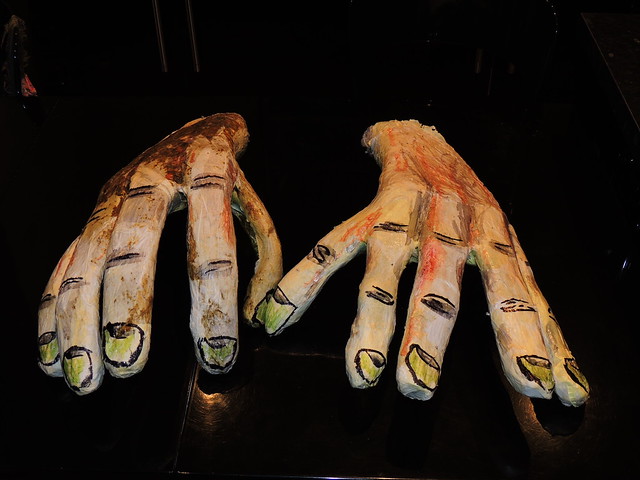
The head and hands had a final coat of coloured latex, to keep the skin colours consistent
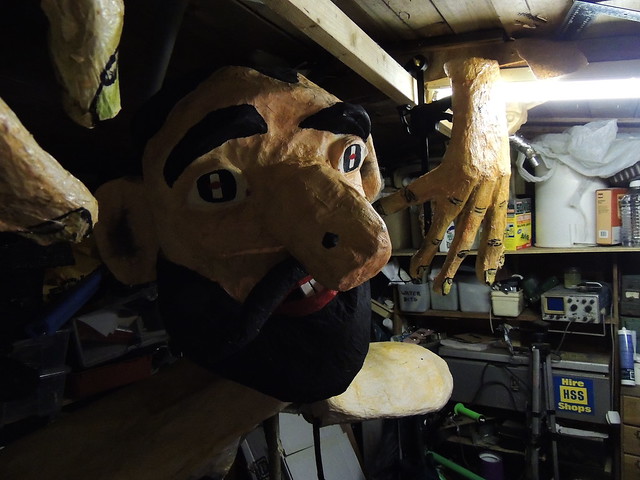
The hands were given sleeve-arms, made from white sheets...
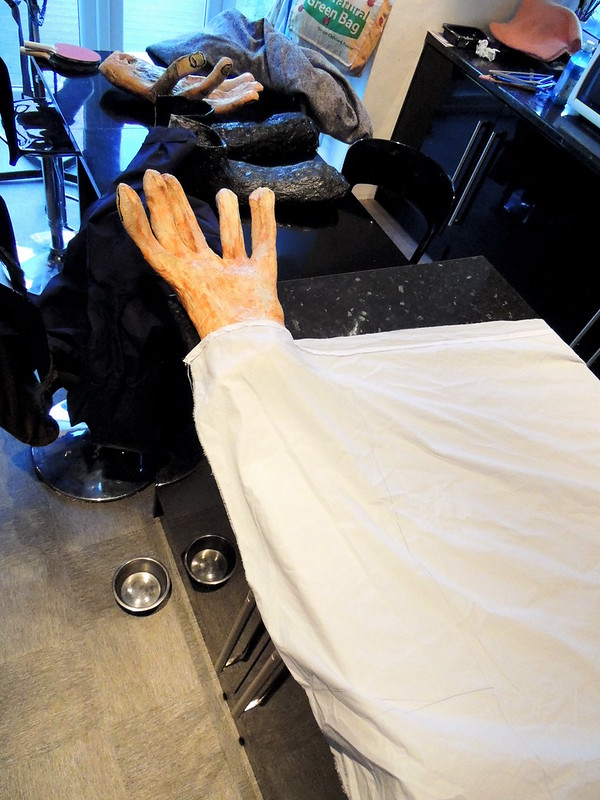
There is bubble wrap inside the sleeves to keep them from collapsing and to make sure they still look bulky like arms...
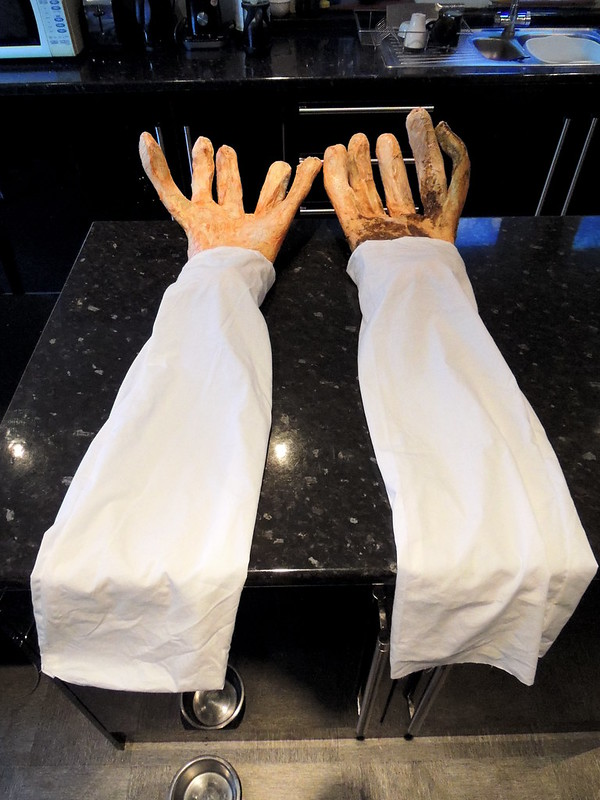
The sleeves were attached to the shoulders...
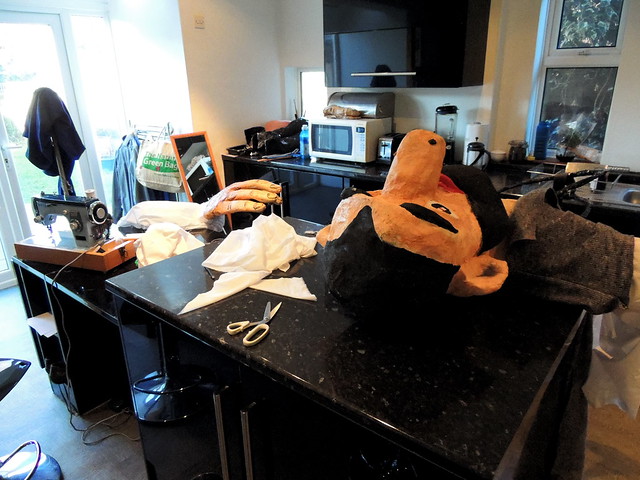
And a tunic was fitted over the top...
You can't see them here, but each hand has a 3' pole attached for the actor to operate the puppety arms. The arm span is quite substantial.
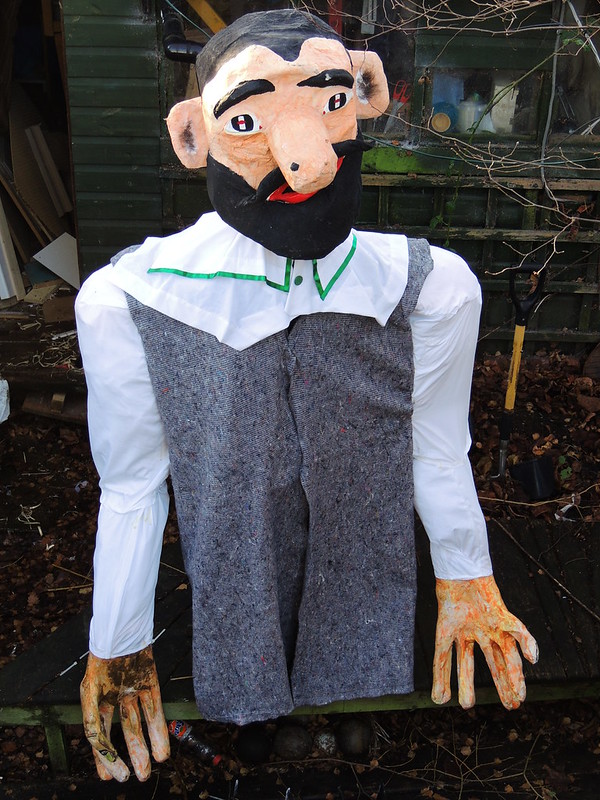
Here it is on stage, prior to action...
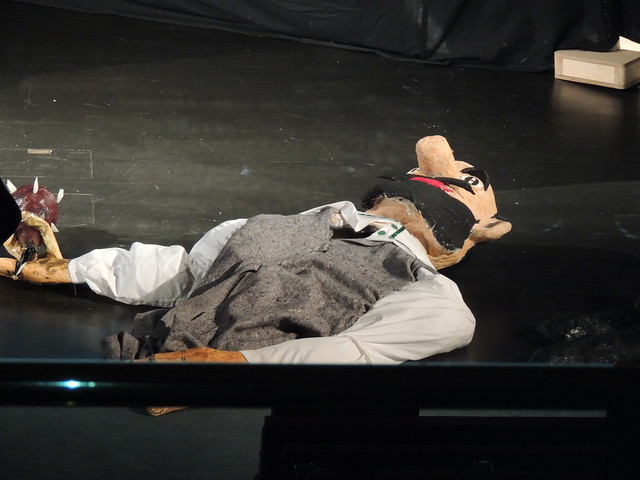
And with the actor in costume. They are stooping here to allow a dresser adjust the collar, but you can get a sense of the relative size of the giant compared to the other actors.
